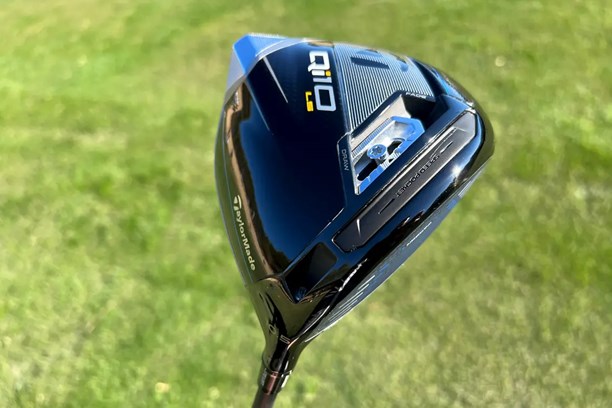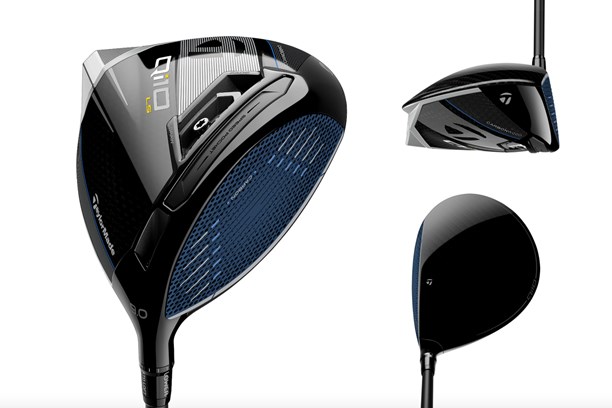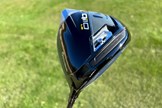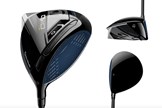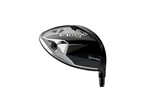TaylorMade Qi10 LS Driver Review
Last updated:
-
At a glance
- TG Rating
- Owner Rating
-
Pros
- I love how the Infinity Edge crown does away with the unforgiving look of the sliver of titanium at the front of the head.
- A great option for high-speed players looking to control spin.
- Long-term TaylorMade fans will love the head shape.
-
Cons
- A great driver, just be aware it's the least forgiving model in the Qi10 family.
What we say...
With a slightly lower CG projection, the TaylorMade Qi10 LS driver is designed to spin less, fly further, and be more forgiving. My review finds out if it delivers on its promise.
TaylorMade have always challenged themselves to create the fastest and longest drivers on the market. It’s a stance that has become the brand’s calling card over the last two decades. But, for 2024, they have taken a hugely different approach in designing the new TaylorMade Qi10 driver. This year, in a bid to create the best golf drivers ever, the brand set themselves what up until now has been an impossible challenge.
Golfers have typically had to choose between prioritizing speed or forgiveness with their driver. Golfers wanting to prioritize speed and distance have usually turned towards TaylorMade, Callaway, and Cobra, while golfers seeking forgiveness over raw power have found comfort in Ping drivers.
But TaylorMade are promising the best of both worlds with the new TaylorMade Qi10 driver. Here’s how…
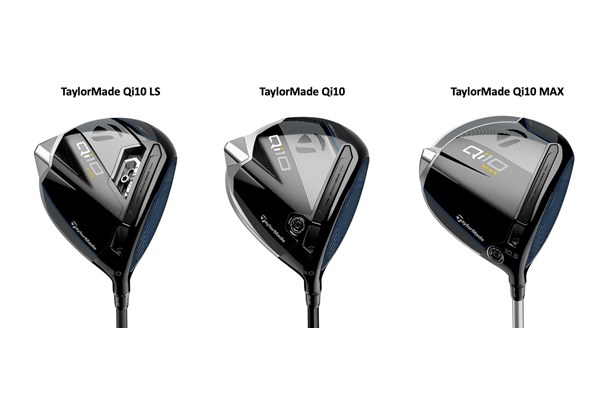
A brilliant low-spin driver option in 2024
Pros
- I love how the Infinity Edge crown does away with the unforgiving look of the sliver of titanium at the front of the head.
- A great option for high-speed players looking to control spin.
- Long-term TaylorMade fans will love the head shape.
Cons
- A great driver, just be aware it's the least forgiving model in the Qi10 family.
| Lofts: | 8° / 9° / 10.5° |
| Stock shafts: | Mid - Mitsubishi Tensei AV Limited Blue 65 (X/S/R) |
| Low – Mitsubishi Tensei AV Ltd Black 65 (X/S) | |
| Stock grip: | Golf Pride Z-Grip Plus 2 (52g) |
How to design drivers for speed and forgiveness
TaylorMade drivers have never lacked speed. The company has prided itself on pushing the speed and distance envelope to the absolute limit for decades.
To preserve this speed while increasing forgiveness, TaylorMade have redesigned the face surrounds to work in tandem and not oppose each other. This helps retain ball speed when shots don’t perfectly impact center face. Thanks to a 3rd generation 60-layer carbon fiber face (which improves energy transfer, due to being lighter than titanium) the TaylorMade Qi10 LS driver sacrifices zero speed while offering improved forgiveness, making it one of the best low spin drivers.
The most forgiving drivers typically have a center of gravity located further back in the head, which boosts stability. A deeper center of gravity, though, dictates a higher center of gravity projection through the face, which increases spin. High MOI driver heads are also routinely less aerodynamically efficient and come with slightly heavier head weights, which costs additional speed and distance.
But it’s important to remember high MOI drivers are great at preserving ball speed on off-center hits. They do this as the ball experiences less gear effect at impact. As the face deflects less when hit off-center. Which is exactly why the company has pursued this route. Even though historically the idea goes completely against TaylorMade’s usual aim of delivering maximum speed and distance above all else.
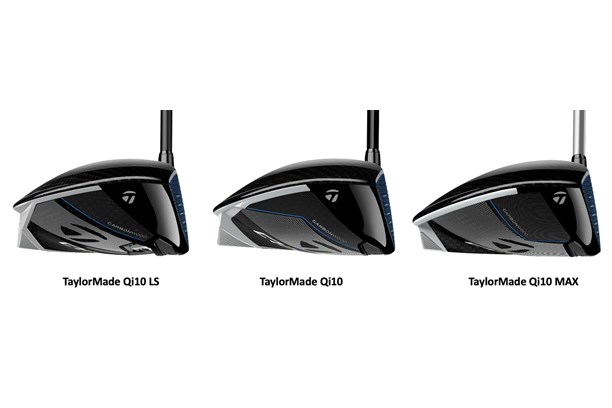
How did TaylorMade break the speed and forgiveness barrier?
Well, their thinking comes down to three key areas.
First, they’ve learned how to incorporate advanced lightweight materials together. Yes, the carbon fiber face is part of the equation, as it has been before. But so too is upping the carbon crown size to 97% from 79% on the previous Stealth 2. They’ve done it by creating an Infinity Crown, so the carbon fiber weave runs to the top of the face. It’s an incredibly tough engineering challenge to pull off, but it means golfers can expect a very clean and simple look at address.
Secondly, they’ve deployed a whole new inertia-focused head shape (on the Max model only). Expect a 9% larger footprint that is not too dissimilar to a Ping G430 Max. The Max head is 8mm longer from face to back and sits right on the size limit allowed by the game’s governing bodies. Whereas this standard Qi10 model is much more streamlined behind the heel like a traditional TaylorMade driver.
Putting all the lightweight advanced materials together, along with the new shaping, plus weight positioned in extreme locations (thanks to the increased head size and shape and 32g low/deep backweight) it’s possible to hit the magic 10,000g cm2 MOI number.
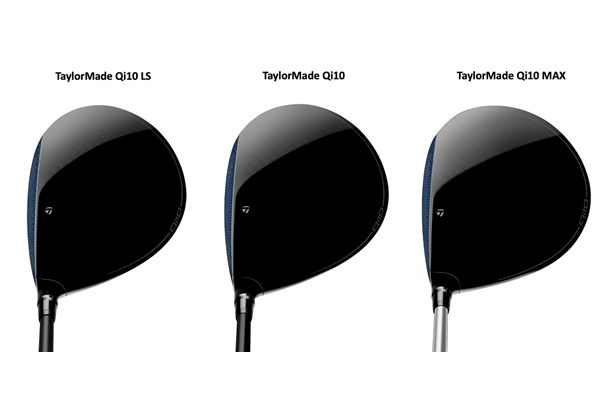
What does the Qi10 LS name mean?
After the Stealth and Stealth 2, the new Qi10 franchise is very different in terms of naming conventions. Some will inevitably say it’s a way of burying ‘Stealth’ which didn’t set the market on fire in 2023. But, the idea behind the new name makes a lot of sense. It’s an amalgamation of the brand’s ‘Quest for Inertia’ and hitting the ‘10K’ barrier.
An idea spurned by the company’s quest to produce the world’s most forgiving driver, without compromising on speed. The LS moniker is just a Low Spin version of the Qi10 family.
Video: How does the TaylorMade Qi10 LS compare to other Low Spin drivers?
Will the TaylorMade Qi10 LS driver suit you?
RRP: $629 / £529
Lofts: 8° / 9° / 10.5°
Stock shafts: Mid launch – Mitsubishi Tensei AV Limited Blue 65 (X/S/R) | Low launch – Mitsubishi Tensei AV Ltd Black 65 (X/S)
Stock grip: Golf Pride Z-Grip Plus 2 (52g)
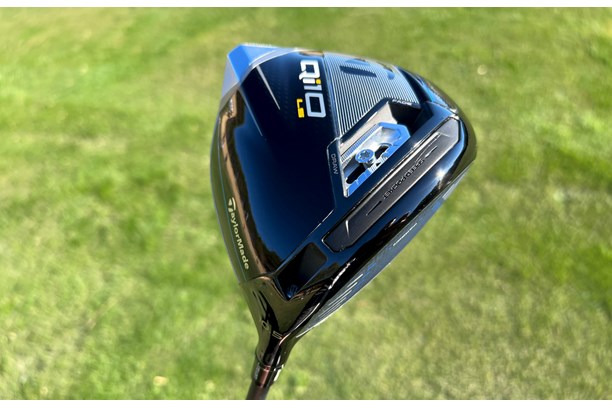
In previous TaylorMade driver families, the new LS has been called the Plus. It’s the only driver in the family that comes decked out with a movable sole weight (18g), a useful feature in helping tour pros and elite players dial in shot shape. This time around the TaylorMade Qi10 LS name spells out that the model is for golfers looking to lower spin.
This is the driver model that Rory McIlroy, Scottie Scheffler, Tommy Fleetwood, and Collin Morikawa will play on tour. Typically the model is most at home in the hands of better, higher-speed players, who also often want a degree of workability.
An MOI of 7600g cm2 is very similar to the previous Stealth 2 Plus but a lower CG projection helps reduce spin for additional distance. Expect a smaller footprint and typical TaylorMade streamlined head shape.
Removal of the weight track in the heel improves aerodynamic performance, and a clever fixed screw construction removes the need for additional track infrastructure, freeing up additional mass over preceding models.
At the request of the brand’s tour staff, all three driver models have a super simple laser-etched face alignment stripe just below the top edge to aid in setting up square at address.
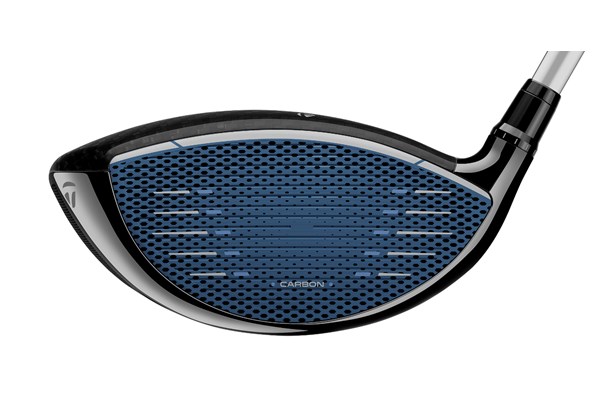
Verdict: TaylorMade Qi10 LS driver
The Qi10 LS has huge amounts riding on its shoulders as this is the model that will be played by a majority of the brand’s athletes out on tour. And when you’ve got the likes of Rory McIlroy, Tiger Woods, and Scottie Scheffler breathing down your neck you cannot afford to cut corners in searching out performance gains as the world’s best players will notice through launch, spin, distance, or their ball flight window.
So, to see how the LS performs we put it up against the leading 2024 low-spin driver models in the hands of TG Test Pro Neil Wain at Keele Golf Centre. Our test data below shows how all the models compare.
Performance
Personally, I love the carbon fiber face story, it’s now into its 3rd generation and if you’re looking for ultimate performance it’s really hard to argue the lighter-weight construction doesn’t genuinely boost ball speed over titanium.
Our data has the LS down as producing our fastest ball speed of not just the low spin driver category but in the hands of our test pro, the fastest ball speed of any driver we’ve tested this year. Highlighting the benefit of front-weighted, low-spin drivers for high-speed players. A performance that explains why brands spend millions on R&D creating tech like carbon driver faces.
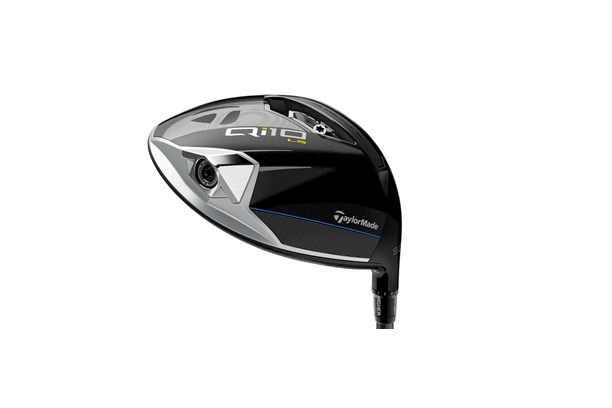
Data, data, data
In our fastest ball speed setting the LS was just 2 yards back from our very longest low spin driver, but experience says such small margins could easily be reversed on another day. Interestingly this setup also gave our test pro the largest dispersion of any low-spin driver tested (1148.4 SQ YDS).
Whereas, once dialed into his preferred and more stable Mitsubishi Diamana X flex shaft (a move that reduced carry distance by a single yard) the shot area tightened by 84.3% to 179.2 SQ YDS – the 2nd smallest in our entire low spin category.
Our test data also paints a picture of how important it is to get fitted for any new driver this year. With the Diamana X flex shaft launching and flying higher (1.8° and 4 yards respectively), and shots hitting the ground at a 2.1° steeper descent angle Neil felt this set-up would be much more playable on the golf course, without compromising on distance.
Where historically many golfers might initially be swayed by the fastest and longest model they can get their hands on.
Looks
When it comes to rack appeal TaylorMade are well known for leading the way as their designs always manage to be seductive and come backed up with marketing stories that are second to none. For this generation, I’m a huge fan of the new infinity crown. It removes the narrow intimidating slither of titanium from the top edge that’s given the company’s last few driver generations the impression of being a touch unforgiving.
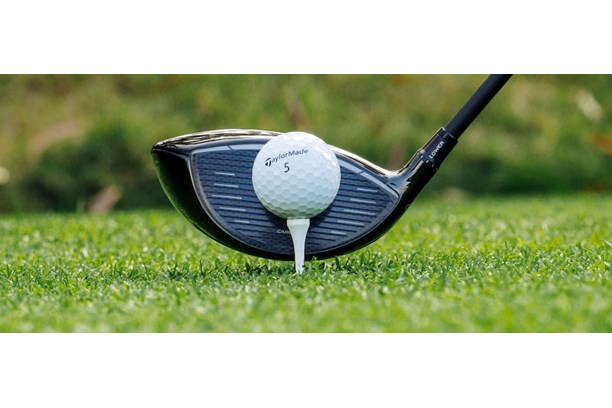
And finally…
If sound is your hang up I can confidently say you won’t hear a crisper more powerful sounding driver when hit by the higher-speed players the club was designed for.
This model tends to be more popular on tour as the sliding weight on the sole gives additional versatility to dial in the golfer’s preferred shot shape and delivery preferences. If you’re a high-speed player I’d advise studying how the LS compares to TaylorMade’s brilliant Qi10 Max driver too. TaylorMade staffer and world number 12 Collin Morikawa has already realized the forgiveness benefits of playing the Max head while giving up very little in terms of ball speed and distance.
From our experience thanks to the Max head being so big with so much weight located at the back it’s possible to dial down loft and get similar spin numbers to the LS. A set-up that could help you hit a few more fairways this year. All in the TaylorMade Qi10 LS is a brilliant low-spin driver option in 2024, I have it amongst our top two performing models of the year, right alongside the Callaway Paradym Ai Smoke Triple Diamond.
Data comparison: How does the TaylorMade Qi10 LS compare to other Low Spin drivers?
| Driver | Ball Speed | Launch Angle | Backspin | Height | Descent Angle | Carry Distance | Shot Area |
| Titleist TSR4 (10° – Tensei Blue) | 162.4 MPH | 10.8° | 1921 RPM | 28 YDS | 32.8° | 277 YDS (1) | 589 SQ YDS |
| Callaway Paradym Ai Smoke TD (Denali S – Back Weight) | 161.9 MPH | 11.2° | 2099 RPM | 31 YDS | 36.2° | 276 YDS (2) | 424.5 SQ YDS |
| TaylorMade Qi10 LS (Tensei Blue S) | 163.6 MPH | 10.7° | 2338 RPM | 32 YDS | 37.8° | 275 YDS (T3) | 1148.4 SQ YDS |
| Callaway Paradym Ai Smoke TD (Denali S – Front Weight) | 161.7 MPH | 10.2° | 1896 RPM | 25 YDS | 31.5° | 275 YDS (T3) | 553.8 SQ YDS |
| TaylorMade Qi10 LS (Diamana X) | 160.4 MPH | 12.5° | 2260 RPM | 36 YDS | 39.9° | 274 YDS | 179.2 SQ YDS(2) |
| Cobra Darkspeed LS (Lin-Q Blue) | 159.9 MPH | 11.8° | 2007 RPM | 31 YDS | 35.7° | 273 YDS | 1089 SQ YDS |
| PXG 0311 GEN6 (Aldila NV Green) | 161.1 MPH | 10.5° | 2240 RPM | 30 YDS | 36.9° | 271 YDS | 147.6 SQ YDS (1) |
| Titleist TSR3 (10° – Tensei Blue) | 162 MPH | 10.5° | 2435 RPM | 32 YDS | 38.2° | 271 YDS | 566.8 SQ YDS |
| Ping G430 LST | 161.4 MPH | 9.7° | 2301 RPM | 28 YDS | 35.1° | 270 YDS | 246.4 SQ YDS (3) |
| Callaway Paradym Ai Smoke TD (Ventus Blue – Back Weight) | 161.7 MPH | 9.9° | 2006 RPM | 26 YDS | 32° | 270 YDS | 800.8 SQ YDS |
| Srixon ZX7 MK II | 159.8 MPH | 11.4° | 2313 RPM | 32 YDS | 38.2° | 269 YDS | 1036.5 SQ YDS |
| Wilson DynaPWR Carbon | 158.5 MPH | 11.2° | 1828 RPM | 27 YDS | 32.9° | 269 YDS | 509.6 SQ YDS |
| Mizuno ST-G (9.5° – Back Weights) | 162 MPH | 9.1° | 2109 RPM | 24 YDS | 31.3° | 268 YDS | 442 SQ YDS |
| AVERAGE | 161.3 MPH | 10.7° | 2135 RPM | 29.4 YDS | 35.3° | 272 YDS | 595 SQ YDS |
If you’re not sure the Qi10 LS is for you, check out our reviews of the standard TaylorMade Qi10 and the super-forgiving Qi10 Max.
Product Information
TaylorMade Qi10 LS Driver
RRP: $629 / £529
Lofts: 8° / 9° / 10.5°
Stock shafts:
Mid - Mitsubishi Tensei AV Limited Blue 65 (X/S/R)
Low – Mitsubishi Tensei AV Ltd Black 65 (X/S)
Stock grip: Golf Pride Z-Grip Plus 2 (52g)
Visit the TaylorMade website here
